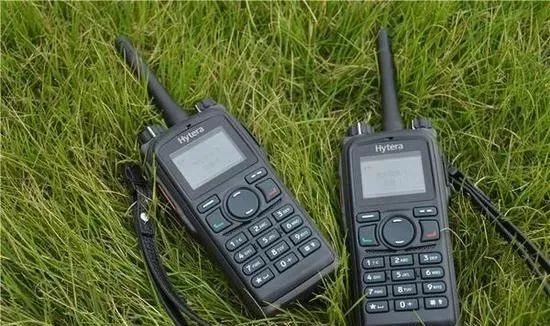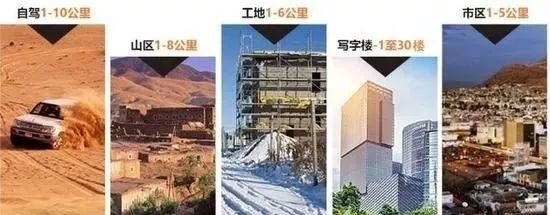Factors affecting talk distance of walkie-talkies With the popularity of walkie-talkie use, it is not only the users of the walkie-talkie who can see the engineering and commercial aspects. In the field of outdoor travel and outdoor adventures, the walkie-talkie has become a contact between friends because of its advantage that communication does not require a network. The preferred communication tool. However, for the first time users of walkie-talkies, how to choose the walkie-talkie that suits them is a difficult problem. Among the multiple functions and parameters of the walkie-talkie, the call distance is the first consideration for the purchase of a walkie-talkie and is related to the use experience of the walkie-talkie. When many people purchase a walkie-talkie, they will ask “How far is the distance between the two parties?†It can be seen that the transmission distance is a very important indicator in the parameters of the walkie-talkie. In fact, the talk distance of a walkie-talkie is affected by many factors, so there is no way to define how far a walkie-talkie can be. For a new user of a walkie-talkie, how to understand the distance of a walkie-talkie is a very important issue. What are the factors that affect the call distance? The author will elaborate on the following aspects for all of us from different aspects. I hope that there will be some small help for some friends who need to start a walkie-talkie. On a large scale, there are two main factors that affect the intercom distance. That is the configuration of the radio itself and the environment used by the radio. Here we will introduce how these two aspects affect the intercom distance. Since the intercom call is not carried out through the network or the like, but the signal is transmitted through radio waves to realize the call, the intercom distance is very easy to be interfered with. Among them, the parameters of the radio itself may affect the distance of the call. First of all, let us understand to see which parameters will influence the intercom distance. One, walkie-talkie signal mode There are two types of walkie-talkies that are commonly seen on the market: digital walkie-talkies and analog walkie-talkies. The difference between the two types of walkie-talkies lies in the way they transmit signals. The digital walkie-talkie's transmission method is to digitize the speech signal and transmit it in the form of digital coding. The transmission mode of the analog walkie-talkie is a walkie-talkie designed using analog communication technology, which modulates the stored signal to the transmission frequency of the walkie-talkie. Therefore, digital walkie-talkies are superior to analog walkie-talkies in anti-signal interference without considering other factors. Second, the intercom power Transmitting power is a very important parameter setting for walkie-talkies. Different power will affect the distance and quality of the call. Without considering other interference factors, the greater the transmit power, the greater the coverage of the signal and the longer the corresponding call distance. When you buy a walkie-talkie, you will find that there is a very clear power indication in the parameters of the walkie-talkie. Interphones on the market, whether it is a public walkie-talkie or civilian walkie-talkie, the common power is basically between 0.5W-5W. The theoretical talk distance of a 0.5W walkie-talkie can reach 3-5 kilometers, but it is difficult to achieve such a long distance in actual use due to various factors of interference. Here we have to understand is that the transmission frequency is not the bigger the better, because a very high frequency of transmission not only consumes power quickly, affecting the life of the power amplifier components, but also strong interference, will affect the call effect of others, but also produce radiation pollution. Radio regulatory agencies in various countries have clear regulations on the transmission power of communications equipment. The use of walkie-talkies in our country must comply with the relevant provisions of the "People's Republic of Radio Regulations." Third, the frequency range of walkie-talkie The frequency of professional walkie-talkie is: 136-174MHZ in V section and 400-470MHZ in U section. Public radio (civilian walkie-talkie): 409-410MHZ. When a walkie-talkie with 150MHz and 400MHz distance is used in the urban area, the 400MHz walkie-talkie has a farther distance to talk, because the antenna gain is higher than the 150MHz one. In the mountain area, the 150 MHz walkie-talkie has a long distance to talk because of the existence of radio wave diffraction. Functionally speaking, both walkie-talkies are similar. So in different environments, in order to improve the quality and distance of the call, we must choose the frequency and frequency band that are suitable for the current environment. Influence of Environmental Factors on Intercom Call Quality In addition to the influence of the parameters of the interphone on the call distance and call quality, the use environment also has a great influence on the intercom call. Which specific environment will affect the talk on the phone? Now let's learn this together. First, obstacles Obstacles such as mountains, forests, tall buildings and so on. In an open environment, a walkie-talkie with a power of 5W can reach a distance of 2.5 kilometers, and in a city with a high number of buildings, the talk distance of a walkie-talkie with the same power is about 1 km. Therefore, when using a walkie-talkie at a high place, the call distance is much longer than at a low place. After all, the higher the obstacle is, the less it becomes. Distance difference between different environment interphones Second, the electromagnetic environment The electromagnetic environment refers to "all electromagnetic phenomena and sums that exist in a given place." With the development of science and technology, electronic products and electrical appliances have become common things in people's lives, causing the situation of the electromagnetic environment to become more and more serious. In the electromagnetic environment, the talk distance and quality of the radio will also be greatly affected. In addition, different weather conditions can also interfere with the use of a walkie-talkie. Walkie-talkie signal transmission illustration Other interference factors 1. The battery is low. When the power of the walkie-talkie is insufficient, the quality of the call is degraded and the call may be affected. 2. Antenna matching is incorrect. The antenna frequency and the frequency of the fuselage are inconsistent, and the installation of the antenna is inconvenient. This will affect the use of the intercom. So be sure to pay attention when installing the antenna. Summary: There are many factors that affect the talk distance of the walkie-talkie. The author here introduces some common interference factors. I believe that after reading this introduction, we will have a deeper understanding of the intercom distance and hope that it will help everyone in the purchase and use. Easy Electronic Technology Co.,Ltd , https://www.yxpcelectronicgroups.com



